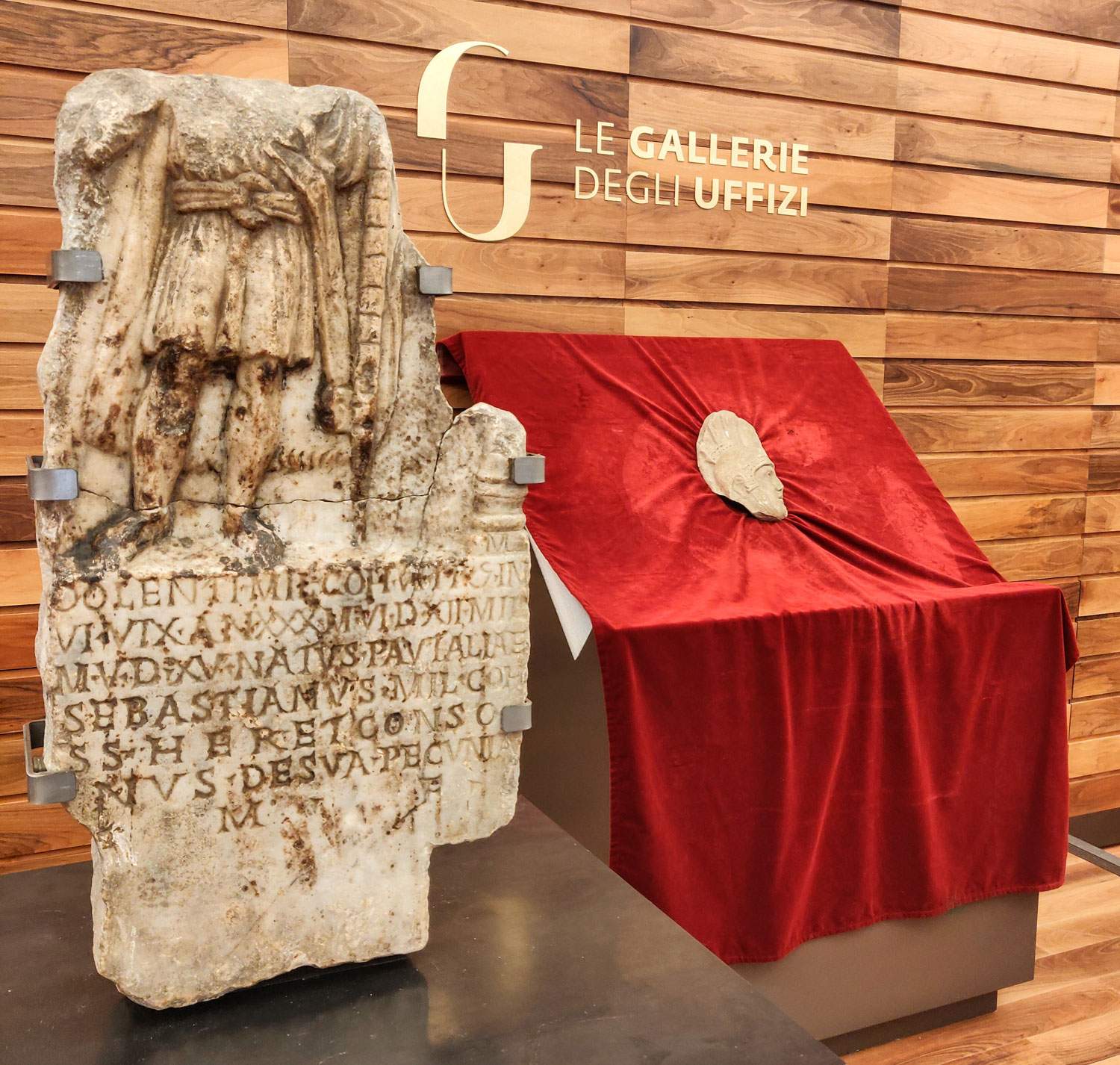Classical languages are alive at the Uffizi. Important purchase and... Latin and Greek videos
While Princeton University’s decision to abolish the compulsory study of Latin and Greek in Department of Classical Studies curricula has caused much discussion in recent days, at the Uffizi this problem does not arise and, indeed, Latin and ancient Greek are two languages that are more alive than ever. In fact, the Uffizi is celebrating Archaeology Days (June 17-19, 2021) in grand style, first with the presentation of an important acquisition, a Roman funerary stele from the early third century CE, and then with a video in Latin and ancient Greek.
The funerary stele is dedicated to the soldier Dolens: it depicts the body of a soldier in light uniform (the head has unfortunately been lost). The inscription pays tribute to a praetorian native of Thrace, from where he emigrated very young precisely to join the praetorian forces in Rome. Dolens seems to have been one of the first non-Italian praetorians: the possibility of joining this special corps had in fact been established shortly before by Emperor Septimius Severus, at the time of his accession to power in 193 AD. The soldier Dolens died in Rome, almost 31 and close to discharge, after 12 years of service (the maximum limit was 16 years). Commissioning the stele was his cousin Sebastianus, another praetorian, his fellow soldier and relative.
The stele, along with other valuable inscriptions and archaeological finds, will be visible in the Vasarian Corridor in the future, when architectural restorations are completed, and will be the subject of two videos (one in Latin and one in Italian) on the Uffizi’s Facebook page, also as part of the International Archaeology Days. The event this year also begins with a novelty: in fact, at its opening, a video in classical Greek will be posted on the museum’s Facebook page, illustrating the famous Venus of the Medici, a Hellenistic sculpture dating to the second century B.C. and exhibited in the Uffizi Tribune. In another clip on Instagram, also in Greek, a group of experts from the Uffizi Galleries will illustrate the importance of Plato’s language to world culture.
“The Praetorian Dolens, to whom the stele recently acquired by the Uffizi is dedicated,” says Eike D. Schmidt, director of the Uffizi, “spoke both Latin and Greek. In fact, the Greek language remained always in use, and was actively cultivated in imperial Rome. The videos we will post on Facebook and Instagram serve to reaffirm its centrality and universal value for modern culture as well.”
 |
| Classical languages are alive at the Uffizi. Important purchase and... Latin and Greek videos |
Warning: the translation into English of the original Italian article was created using automatic tools. We undertake to review all articles, but we do not guarantee the total absence of inaccuracies in the translation due to the program. You can find the original by clicking on the ITA button. If you find any mistake,please contact us.



























